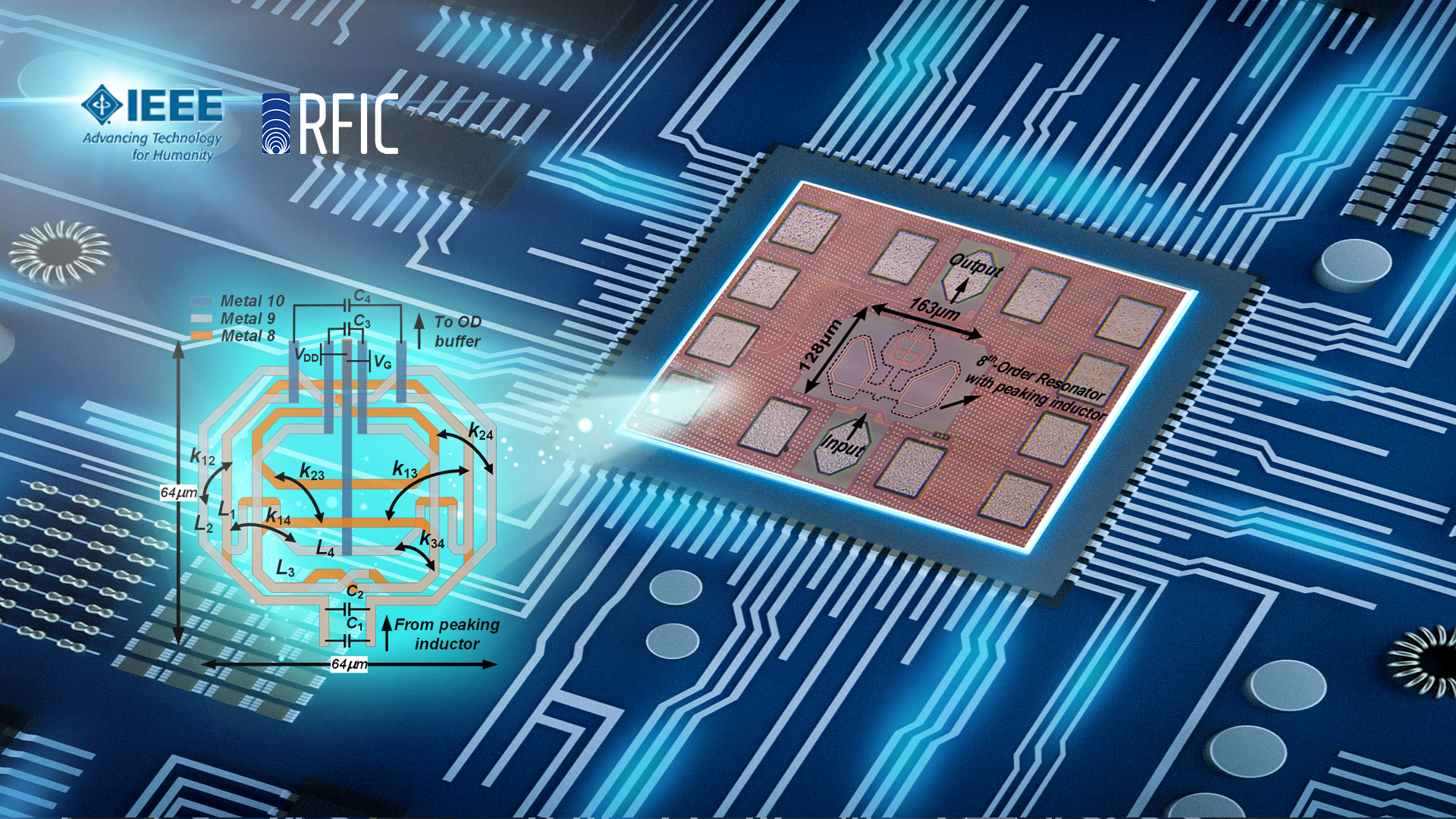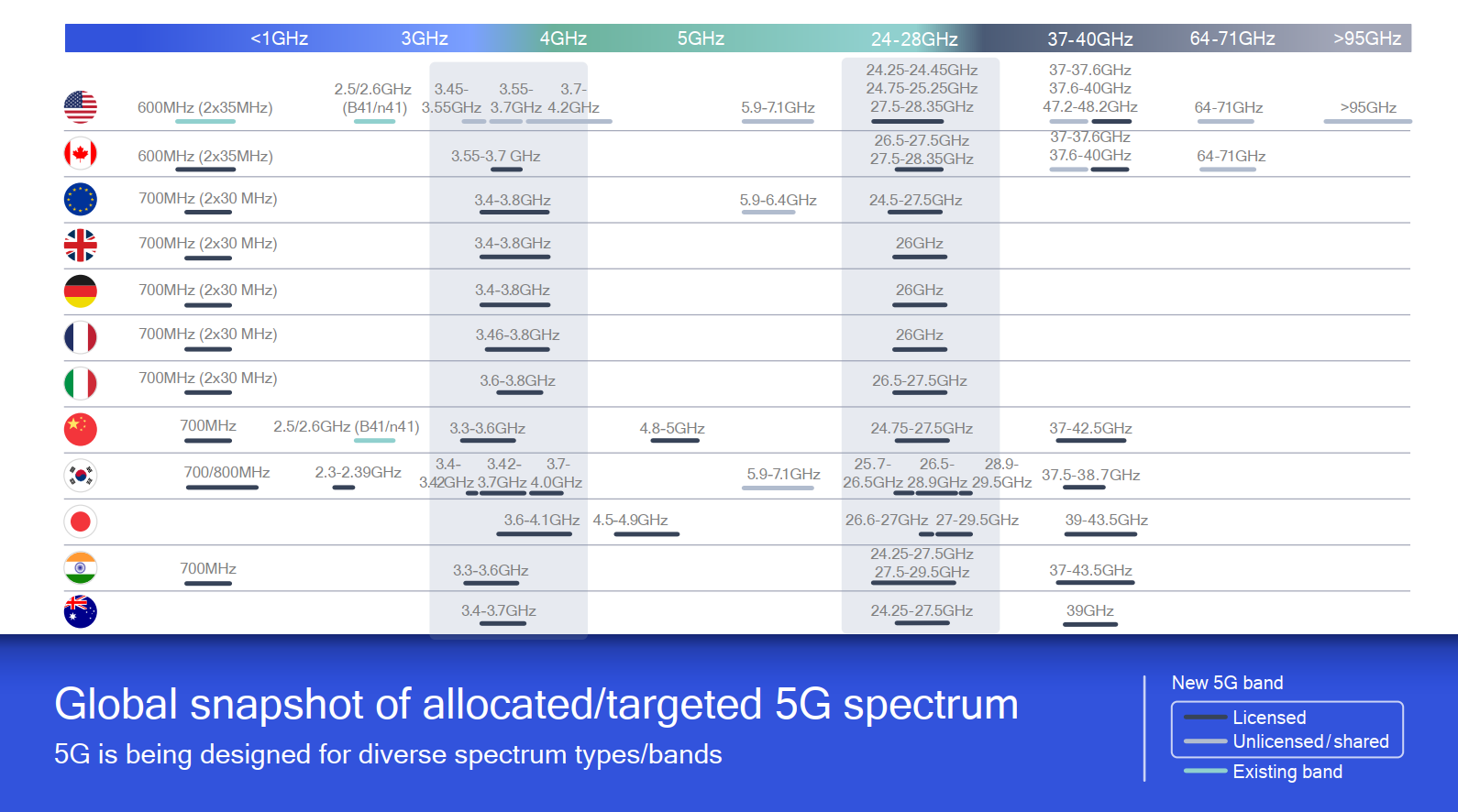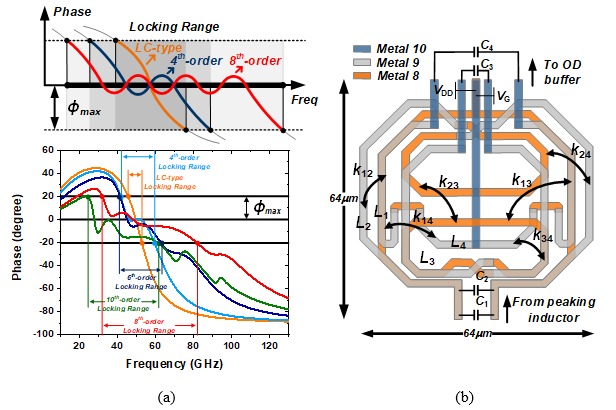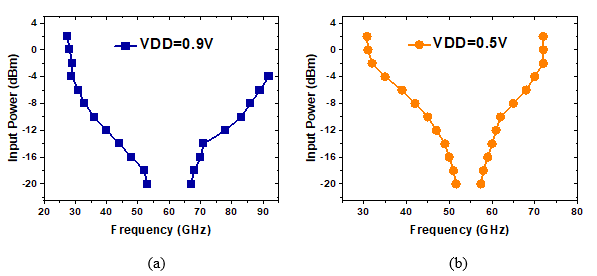Recently, the research group of Quan Pan, Assistant Professor of the School of Microelectronics (SME) at the Southern University of Science and Technology (SUSTech), has made significant progress in the fifth generation (5G) millimeter-wave communication system integration field. They successfully developed two injection-locked frequency divider chips for wireless communication transceivers covering 5G bands in all countries in the world.

Their work, entitled “Tuning-Less Injection-Locked Frequency Dividers with Wide Locking Range Utilizing 8th-Order Transformer-Based Resonator,” was published at the 2021 IEEE Radio Frequency Integrated Circuits Symposium (RFIC 2021), which is a premier forum focused exclusively on presenting the latest research results in radio frequency (RF), millimeter-wave, and wireless integrated circuits.

Figure 1. Global 5G band division table
In recent years, with the acceleration of the commercialization of 5G and the further research on millimeter-wave technology, mobile communication is stepping into a new era. At present, countries worldwide have different classifications for the 5G communication spectrum, while there is also an unlicensed spectrum that needs to be developed.
For 5G millimeter-wave communication systems, ultra-wideband and low power consumption have always been essential indicators. To build an ultra-wideband millimeter-wave transceiver suitable for 5G applications, the phase-locked loop (PLL) is the most important module. At the same time, the injection-locked frequency divider (ILFD) is the bottleneck of millimeter-wave PLL. None of the millimeter-wave ILFDs published globally can simultaneously cover all 5G licensed and unlicensed spectra. Therefore, an ultra-wideband ILFD that can support all frequency bands in the world is significant.

Figure 2. (a) Phase response diagram of a transformer with different orders and (b) Design diagram of an eight-step transformer
It found that the locking range of the ILFD is closely related to the flatness of the phase response of the resonator. The higher the order of the resonator based on the transformer is, the flatter the phase response curve near to 0° is, the wider the locking range is. However, it is not that the higher the order of the transformer is, the better. The higher the order of the transformer will lead to a sharp decline in the phase response curve, making the locking range narrow.
Many simulation experiments and calculations found that the resonator’s phase response curve based on the eighth order transformer is within 0°. It can achieve the flattest nearby to reach the widest locking range. At the same time, the inductance peaking gain technique can enhance the impedance of the resonant resonator and effectively reduce the power consumption of the chip.
In this paper, based on TSMC 40nm CMOS process, two ILFD chips with the same eighth order transformer are demonstrated. By designing different circuit parameters, one chip can meet the ultra-wideband applications, and the other chip can achieve the highest energy efficiency. The first chip achieves a 63.1 GHz frequency locking range and a 10.9 GHz/mW energy efficiency ratio. The second chip performs a frequency locking range of 41 GHz and an energy efficiency ratio of 26.6 GHz/mW.

Figure 3. Frequency locking range: (a) Chip #1 and (b) Chip #2
In comparison with the most advanced technology in the industry, this paper has realized the widest locking range and the highest energy efficiency ratio globally, covering all 5G millimeter-wave bands worldwide. The overall performance reaches the world’s leading level. It provides a feasible scheme for designing ILFD’s in the millimeter-wave field, which is practical for applying high-frequency bands in 5G communication.

Figure 4. Micrographs of the two chips
Research Assistant Jiang Qiyao of the School of Microelectronics at SUSTech is the first author of this paper. Assistant Professor Pan Quan at SUSTech is the corresponding author. This work is supported by the National Natural Science Foundation of China (NSFC), the Natural Science Foundation of Guangdong Province, and the Research and Development Program in Key Areas of Guangdong Province.
Paper link: https://ieeexplore.ieee.org/document/9490424/
Proofread ByAdrian Cremin, Yingying XIA
Photo By